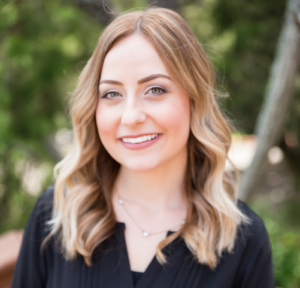
When searching for the best rehab for your child, choosing a center can be overwhelming. Given the array of options, it can be difficult to know what to consider. Below you will find different options when selecting a rehab center that's a good fit for your child.
Special Considerations
Quality of Treatment from the Rehab Center
When seeking a high-quality rehab or treatment center for your child, it is essential first to know that no single treatment is appropriate for every child. In fact, treatment must be tailored to your individual child’s needs.
The best approach to treatment includes supporting the child’s larger life needs, such as those related to medical, psychological, and social well-being, as well as housing, school, transportation, and legal services. Failing to address such needs simultaneously could interfere with the child’s recovery. [1]
When considering a potential center, the center’s staff should be able to tailor treatment to your child’s specific needs.
Additionally, you want to look for an accredited center. The highest accreditation level for rehab centers is the Joint Commission Behavioral Health accreditation.
This accreditation means that the center opens its doors to a panel of outside experts for review. The panel will validate the care, treatment, and services provided at the center. [4]
For minors, the Joint Commission helps to ensure certain care standards are in place at the center, such as minor and adult clients must be separated, minors must have appropriate supervision, and so on.
Location

Location will likely influence your decision on selecting a center. Is it best that your child stay local or go somewhere farther from home? According to the National Institute on Drug Abuse, people in the United States can choose from more than 14,500 drug and alcohol treatment centers. [3]
Location is especially important when considering family involvement (for example, family therapy, family groups, and on), which research suggests is imperative when helping a child overcome substance use disorders as well as mental health issues. [1]
Lifestyle Considerations
Lifestyle considerations may influence your decision on selecting a center as well. Some centers further specialize in or have special accommodations for LGBTQ+, mental or physical disabilities, religion, and so on.
Level of Care
Another factor that plays a large role in selecting a center is the level of care that your child needs to help them recover. Choosing the level of care is where a recommendation from a provider who specializes in substance abuse and co-occurring issues will come in.
This consists of seeking a formal assessment from a specialist. Know that prior to admission into a rehab center, your child will be required to complete one of these assessments to ensure the level of care is a good fit for them.
During this intake assessment, a well-trained clinician should be assessing the following six areas that the American Society of Addiction Medicine (ASAM) has developed for determining the appropriate level of care for adolescents with substance abuse problems: [2]
- Level of intoxication and potential for withdrawal
- Presence of other medical conditions
- Presence of other emotional, behavioral, or cognitive conditions
- Readiness or motivation to change
- Risk of relapse or continued drug use
- Recovery environment (e.g., family, peers, school, legal system)
Based upon the findings of these six areas, a level of care recommendation will be provided for your child. Here is a breakdown of the different levels of care:
Outpatient Care
The most commonly offered and lowest level of care is known as “outpatient care.” This level of care consists of various outpatient services which may include one or more of the following:
- Individual therapy
- Group therapy
- Family therapy
- Psychiatric care
- Physical care
- Educational support
- Legal support
Outpatient treatment is traditionally recommended for those with less severe addictions, few additional mental health problems, and a supportive living environment, although evidence suggests that more severe cases can be treated in outpatient settings as well. [1]
Many children who are seeking outpatient care can remain in school, at least part-time. The frequency of appointments may vary based on your child’s needs and their providers’ recommendations.
Appointments may vary between one or two times a week to a monthly or even on an “as needed” basis. The length of time that a child will need to remain in outpatient care varies significantly based on their individual needs.
Intensive Outpatient Care
A step up from outpatient care is what is referred to as “intensive outpatient programming” or “IOP.” At this level of care, your child is likely going to attend programming three to four hours out of the day for three or four days out of the week.
 Programming may include individual therapy, family therapy, group therapy, multifamily group therapy, medication management with a provider, and perhaps adjunct therapies like equine, art, or yoga therapy.
Programming may include individual therapy, family therapy, group therapy, multifamily group therapy, medication management with a provider, and perhaps adjunct therapies like equine, art, or yoga therapy.
The average length of stay in an IOP varies based on the program and your child's needs. Another factor that may, unfortunately, play a role is insurance coverage.
If the child’s family cannot afford IOP services once insurance denies the need for the client to stay at this level of care, then the child's stay in the program may end when insurance coverage ends. Typical average length of stay may be anywhere between four and 12 weeks.
Partial Hospitalization
Adolescents with more severe substance use disorders but who can still be safely managed in their home living environment may be referred to a higher level of care referred to as “Partial Hospitalization Programming” or “PHP.” [1]
This programming often consists of the same services as IOP. However, more time is spent receiving these services. Your child may attend a PHP five to seven days out of the week for four to up to even twelve hours a day.
This program is likened to a school day where children also receive meals at the program. Furthermore, PHP for school-aged children may include an education or schooling component so that students do not get behind in school work.
Similar to IOP, the average length of stay in a PHP varies based upon the program, your child's needs, and insurance coverage.
Residential or Inpatient Treatment
Residential or inpatient treatment is a resource-intense high level of care, generally for adolescents with severe levels of addiction whose mental health and medical needs and addictive behaviors require a 24-hour structured environment to make recovery possible. [1]
 These adolescents may have complex psychiatric or medical problems or family issues that interfere with their ability to avoid substance use. [1] Residential or inpatient treatment is as it sounds - the child lives or resides at the facility, staying 24-hours a day.
These adolescents may have complex psychiatric or medical problems or family issues that interfere with their ability to avoid substance use. [1] Residential or inpatient treatment is as it sounds - the child lives or resides at the facility, staying 24-hours a day.
Longer length of stays are associated with residential treatment, whereas inpatient treatment is associated with shorter stays where the child discharges when viewed as medically or emotionally stable (typically no longer than two weeks).
Centers can vary significantly in their offerings. It is often helpful to visit different centers and see what may be the best fit for your child. The most important part of choosing a rehab center is selecting one that fits your child’s unique recovery needs.
Finding the right fit between your child and the center’s offerings is essential for a successful long-term recovery.
References:
1. National Institute on Drug Abuse. (2014, January 14). Principles of Adolescent Substance Use Disorder Treatment: A Research-Based Guide. Retrieved from https://www.drugabuse.gov/publications/principles-adolescent-substance-use-disorder-treatment-research-based-guide on 2018, February 1
2. American Society of Addiction Medicine. ASAM Patient Placement Criteria for the Treatment of Substance Related Disorders, 2nd Edition. Chevy Chase, MD: American Society of Addiction Medicine, 2001.
3. National Institute on Drug Abuse. (2012, December). Principles for Drug Addiction Treatment: A Research-Based Guide (Third Edition). Retrieved from https://www.drugabuse.gov/publications/principles-drug-addiction-treatment-research-based-guide-third-edition/drug-addiction-treatment-in-united-states
4. The Joint Commission. (n.d.). The Value of Joint Commission Accreditation. Retrieved from https://www.jointcommission.org/assets/1/18/BHC_Value_Accred_Brochure.pdf
About the Author:
 Chelsea Fielder-Jenks is a Licensed Professional Counselor in private practice in Austin, Texas. Chelsea works with individuals, families, and groups primarily from a Cognitive Behavioral Therapy (CBT) and Dialectical Behavior Therapy (DBT) framework. She has extensive experience working with adolescents, families, and adults who struggle with eating, substance use, and various co-occurring mental health disorders. You can learn more about Chelsea and her private practice at ThriveCounselingAustin.com.
Chelsea Fielder-Jenks is a Licensed Professional Counselor in private practice in Austin, Texas. Chelsea works with individuals, families, and groups primarily from a Cognitive Behavioral Therapy (CBT) and Dialectical Behavior Therapy (DBT) framework. She has extensive experience working with adolescents, families, and adults who struggle with eating, substance use, and various co-occurring mental health disorders. You can learn more about Chelsea and her private practice at ThriveCounselingAustin.com.
The opinions and views of our guest contributors are shared to provide a broad perspective of addictions. These are not necessarily the views of Addiction Hope, but an effort to offer discussion of various issues by different concerned individuals.
We at Addiction Hope understand that addictions result from a combination of environmental and genetic factors. If you or a loved one are suffering from an addiction, please know that there is hope for you, and seek immediate professional help.
Published on March 26, 2018
Published on AddictionHope.com
